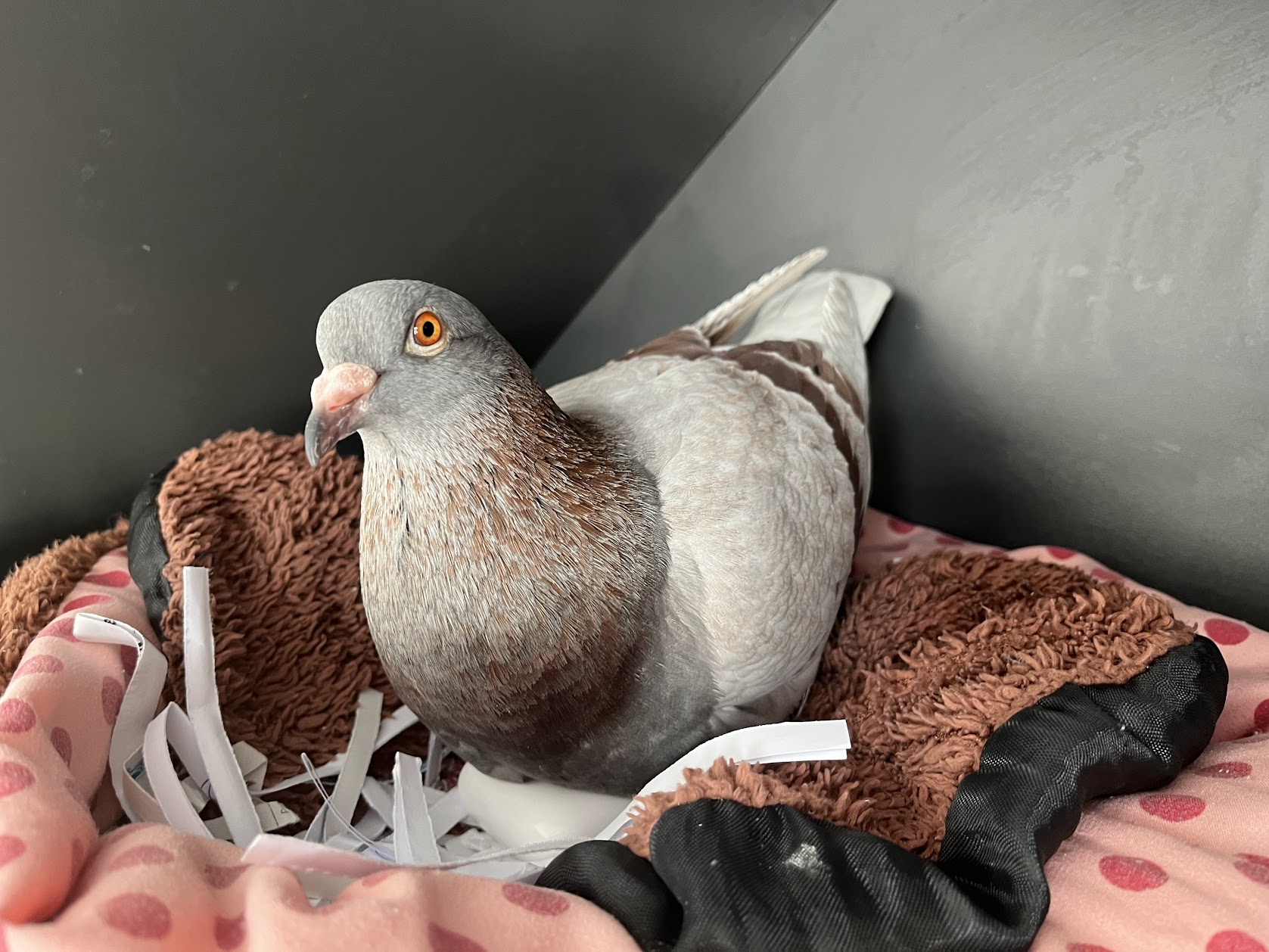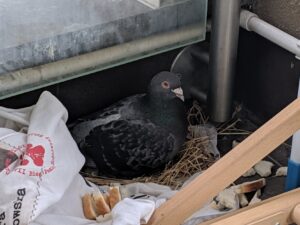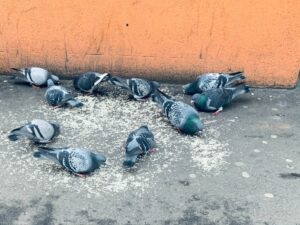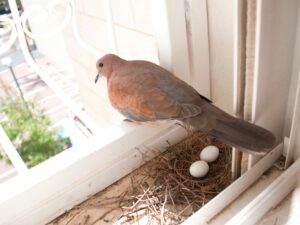Do pigeons make nests? Read the article to learn all about pigeons and nests!
As a proud pet pigeon owner and an avid admirer of these magnificent creatures, I am excited to share some interesting insights into the world of pigeon nesting. Pigeons, which are descendants of the wild rock doves, have adapted incredibly well to urban environments and can be found in almost every corner of the world. Their unique nesting habits not only showcase their adaptability but also give us a fascinating glimpse into their lives.
In this article, we will delve into the intriguing process of pigeon nest building and explore how these resourceful birds create safe and comfortable homes for their families.
So, let’s embark on this journey together and learn more about our fascinating feathered friends!
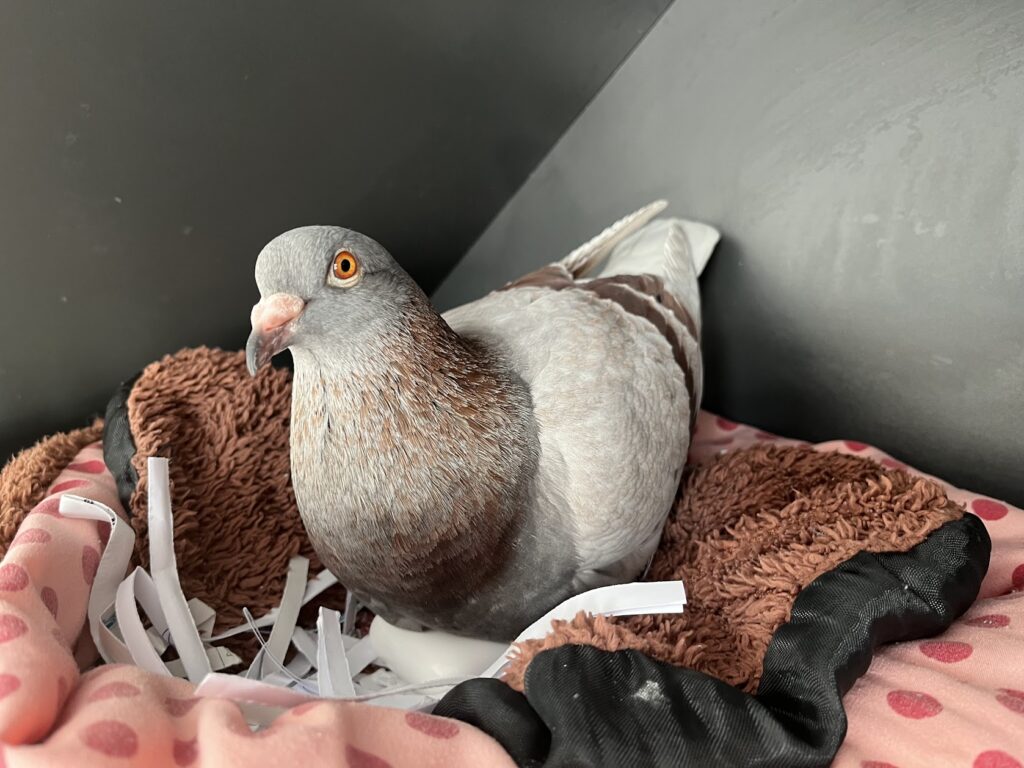
Table of Contents
Do Pigeons Make Nests? The Origin of Pigeon Nesting Behavior
Natural nesting habits of rock doves
To truly understand pigeon nesting behavior, we need to look back in time to their wild ancestors, the rock doves. These resourceful birds originally lived in rocky coastal areas, cliffs, and caves, where they would build their nests on ledges or in crevices.
Rock doves would typically use twigs, grass, and other plant material to create their nests, and they had a penchant for reusing the same nesting sites over and over again. This behavior not only saved them time and energy but also allowed them to be in close proximity to their fellow doves, fostering a sense of community and safety.
Adaptation of domestic pigeons to urban environments
Fast forward to the present day, and we find that domestic pigeons have inherited this nesting behavior from their wild ancestors. However, they’ve had to adapt to the urban jungle in which they now reside. Instead of cliffs and caves, pigeons now make use of buildings, ledges, rooftops, and even window sills to build their nests. They have become masters of utilizing the materials available to them in the city, often using twigs, leaves, paper, plastic, and other debris to construct their nests.
These city-savvy pigeons have not only retained their penchant for reusing nesting sites but have also become quite resourceful in finding and creating cozy nooks for their families. They have truly embraced the urban lifestyle, making the concrete jungle their very own nesting paradise!
Characteristics of Pigeon Nests
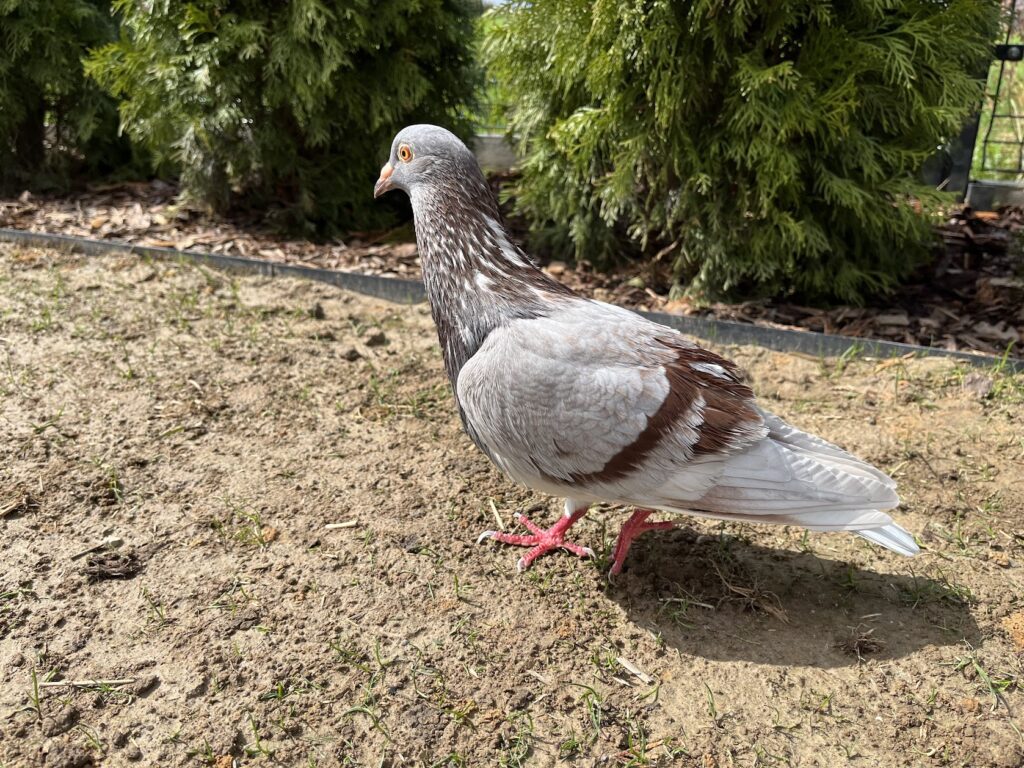
Requirements for nest sites
When it comes to selecting a suitable nesting site, pigeons are pretty adaptable creatures. However, they do have certain requirements that need to be met. Ideally, they seek out locations that provide shelter from the elements, safety from predators, and easy access to food and water.
Pigeons also prefer nesting sites that are elevated, as this helps them keep a watchful eye on their surroundings and stay safe from potential threats.
Common nesting locations
Pigeons have a knack for finding the perfect nesting spots in various environments. In urban settings, they commonly build nests on building ledges, rooftops, window sills, under bridges, and even on balconies. In more rural areas or parks, pigeons might choose trees, barns, or other structures that meet their nesting requirements.
Basically, if there’s a sheltered spot with a good vantage point, chances are a pigeon will consider it as a potential nesting site!
Nest construction materials and process
Pigeons are quite resourceful when it comes to nest construction. They use a wide range of materials, including twigs, grass, leaves, paper, and even bits of plastic and cloth. The male pigeon usually takes the lead in collecting materials, while the female arranges and builds the nest.
Their nests are relatively simple in design – usually just a loose platform or bowl-like structure, without much intricate weaving or shaping.
Appearance of pigeon nests
The appearance of pigeon nests may seem a bit haphazard at first glance, but they serve their purpose well. Pigeon nests are generally small, with a diameter of around 6 to 8 inches, and are only a couple of inches deep.
They’re not the most elaborate or visually appealing nests in the bird kingdom, but they provide a comfortable and secure place for the parents to lay their eggs and raise their chicks. Despite their seemingly disorganized construction, pigeon nests are sturdy enough to withstand the elements and protect their precious contents.
Nest Building and Courtship
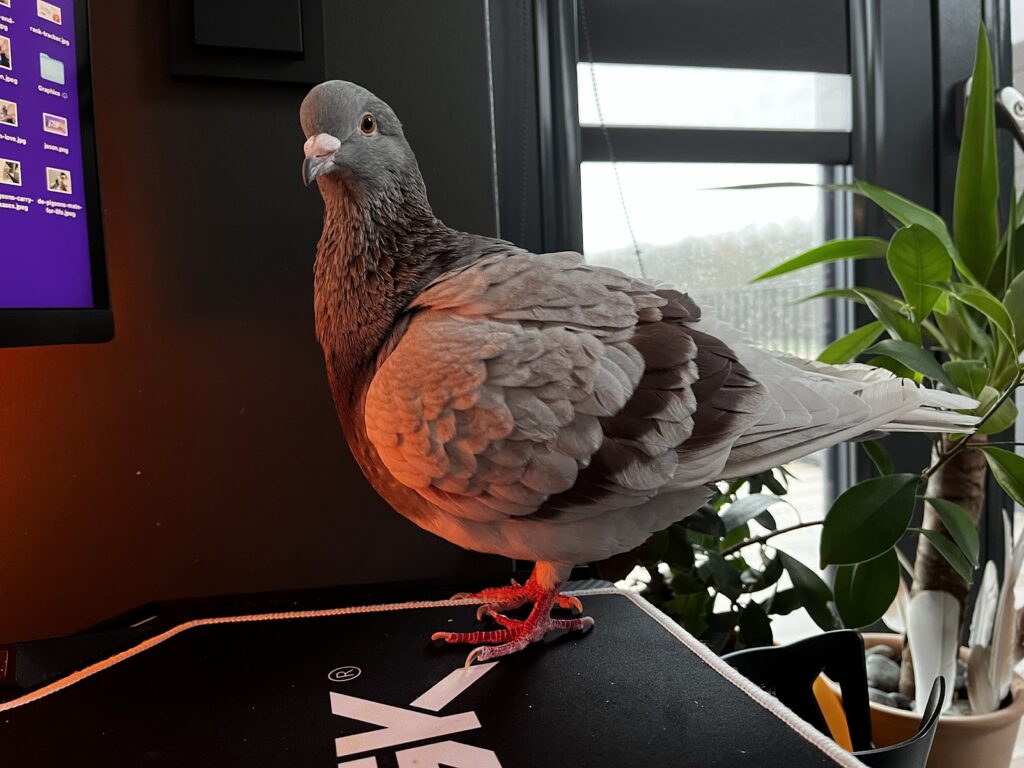
Role of male pigeons in nest building
When it comes to nest building, male pigeons play an important role in the process. They are responsible for selecting the nest site and gathering materials to construct the nest. Once a suitable location is chosen, the male pigeon will bring back twigs, leaves, and other materials to the site.
This initial gathering of materials is an important part of the courtship process, as it demonstrates the male’s ability to provide a safe and comfortable home for his potential mate and their future offspring.
Role of female pigeons in nest building
The female pigeon also plays a crucial role in nest building. While the male is responsible for bringing materials to the nest site, the female is responsible for arranging and weaving them into a sturdy structure.
She will use her beak and feet to shape and mold the materials, creating a cozy and secure nest in which to lay her eggs. This teamwork between the male and female pigeons highlights their commitment to each other and their shared goal of raising a family.
Mating for life and courtship rituals
Pigeons are known for their strong monogamous bonds, often mating for life. This lifelong commitment is established through a series of courtship rituals that help to strengthen the bond between the two birds.
During the courtship process, the male pigeon will perform a variety of displays to attract a potential mate. These displays can include puffing out his chest, cooing, and performing aerial acrobatics.
Once a pair of pigeons has formed a bond, they will continue to engage in these courtship rituals throughout their lives, helping to maintain and strengthen their connection.
This enduring love and commitment between pigeons make them truly unique among birds and further showcases their remarkable nesting and courtship behaviors.
Unique Aspects of Pigeon Nesting
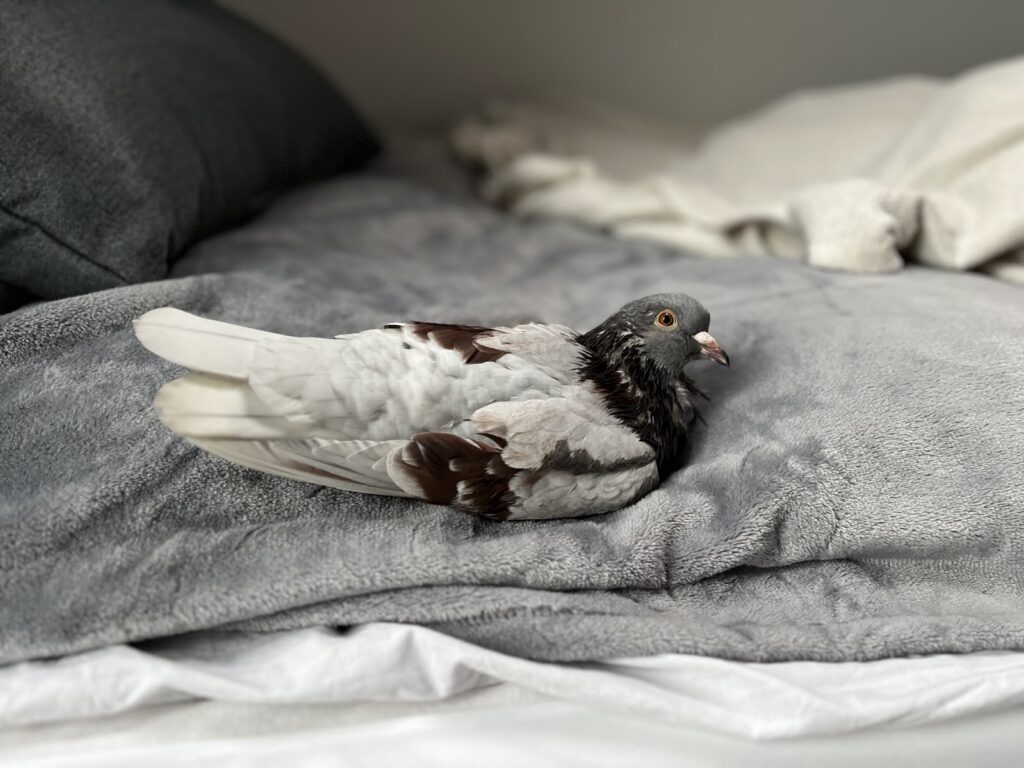
Reusing nests and their accumulation over time
One interesting aspect of pigeon nesting behavior is their tendency to reuse their nests. Once a pair of pigeons establishes a nest, they often return to it for subsequent broods. Over time, they may add more materials to the existing structure, causing it to grow in size and complexity.
In some cases, multiple generations of pigeons might use the same nest, leading to a fascinating accumulation of materials that can provide valuable insights into the lives and habits of these urban avians.
Reasons why people rarely see young pigeons
Many people are curious about why they seldom see baby pigeons or squabs, despite the abundance of adult pigeons in cities. The reason for this is actually quite simple: young pigeons spend the majority of their early lives tucked away in the safety of their nests.
Pigeon parents are very attentive, and squabs don’t leave the nest until they’re almost fully grown and capable of flying. By the time they venture out, they already resemble their adult counterparts, making it difficult for the casual observer to differentiate between young and mature pigeons.
Unique feeding habits of squabs
Another fascinating aspect of pigeon nesting is the unique feeding habits of their young. Pigeons are one of the few bird species that produce a special secretion known as “pigeon milk” to nourish their squabs. Both male and female pigeons produce this nutrient-rich substance in their crop, an expandable pouch in their throat.
The squabs feed on the pigeon milk by sticking their beaks into the parent’s mouth, allowing them to get the nourishment they need to grow and develop. This unique feeding method not only sets pigeons apart from other birds but also contributes to their strong bond with their offspring.
Pigeons’ Loyalty to Their Nests
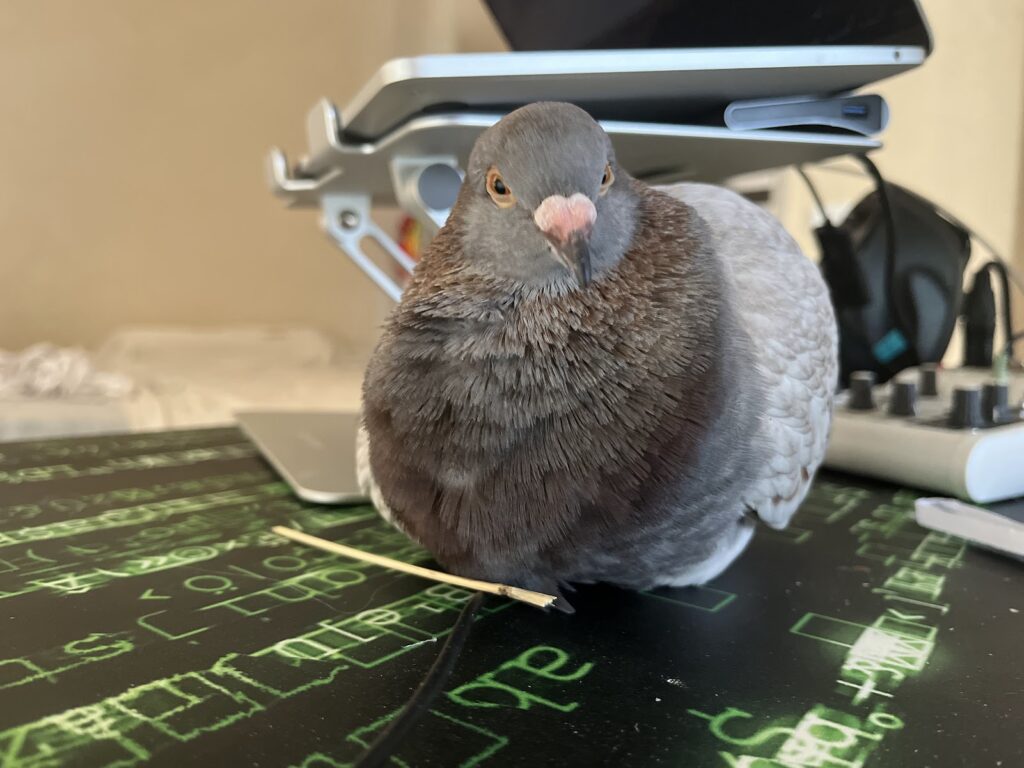
Multiple broods in one nest
Pigeons are well-known for their loyalty to their nesting sites. In fact, they often raise multiple broods in the same nest, which is a testament to their strong attachment to their chosen location. This loyalty extends to their partner as well, as pigeons typically mate for life and work together to raise their young.
The couple will take turns incubating the eggs and caring for the squabs, ensuring that their offspring are well protected and nurtured. This cooperative approach to parenting is yet another remarkable aspect of pigeon behavior that makes these birds truly captivating.
Pigeons as messenger birds and their homing ability
The loyalty of pigeons to their nests has historically been put to great use in the form of messenger pigeons or carrier pigeons. These amazing birds have been used for centuries to carry messages over long distances, thanks to their incredible homing ability. Pigeons are able to find their way back to their nests from hundreds, sometimes even thousands of miles away, using a combination of the Earth’s magnetic field, the position of the sun, and a keen sense of smell.
This homing ability has played a vital role in times of war and peace, as pigeons have been used to transmit important information across battlefields and between distant locations. The dedication of pigeons to their nests has not only contributed to the success of these missions but also earned them a place in history as indispensable allies to humans.
The loyalty that pigeons exhibit towards their nests is truly fascinating and serves as a testament to their adaptability, resourcefulness, and intelligence. Whether building nests in the wild or finding a home amidst the urban landscape, these remarkable birds continue to captivate and inspire with their unique nesting behavior.
Final thoughts
In conclusion, pigeons are fascinating creatures with unique and remarkable nesting habits. From their origin as rock doves to their adaptation to urban environments, pigeons have shown incredible resilience and resourcefulness in building their nests. Pigeon nests display various characteristics such as preferred nest sites, common nesting locations, and the materials used in their construction. Furthermore, the nest-building process also plays a significant role in the courtship and bonding between male and female pigeons, highlighting their strong monogamous bonds.
As bird enthusiasts and responsible pet pigeon owners, it’s important to understand and appreciate these amazing creatures and their nesting habits. By respecting their natural behaviors and giving them the space they need to thrive, we can coexist harmoniously with these remarkable birds. So the next time you spot a pigeon nest, take a moment to appreciate the incredible journey these birds have undertaken and the intricate work that goes into creating a safe and secure home for their young. Let us foster a greater appreciation for pigeons and their unique nesting habits, contributing to a deeper understanding of these often misunderstood creatures.

